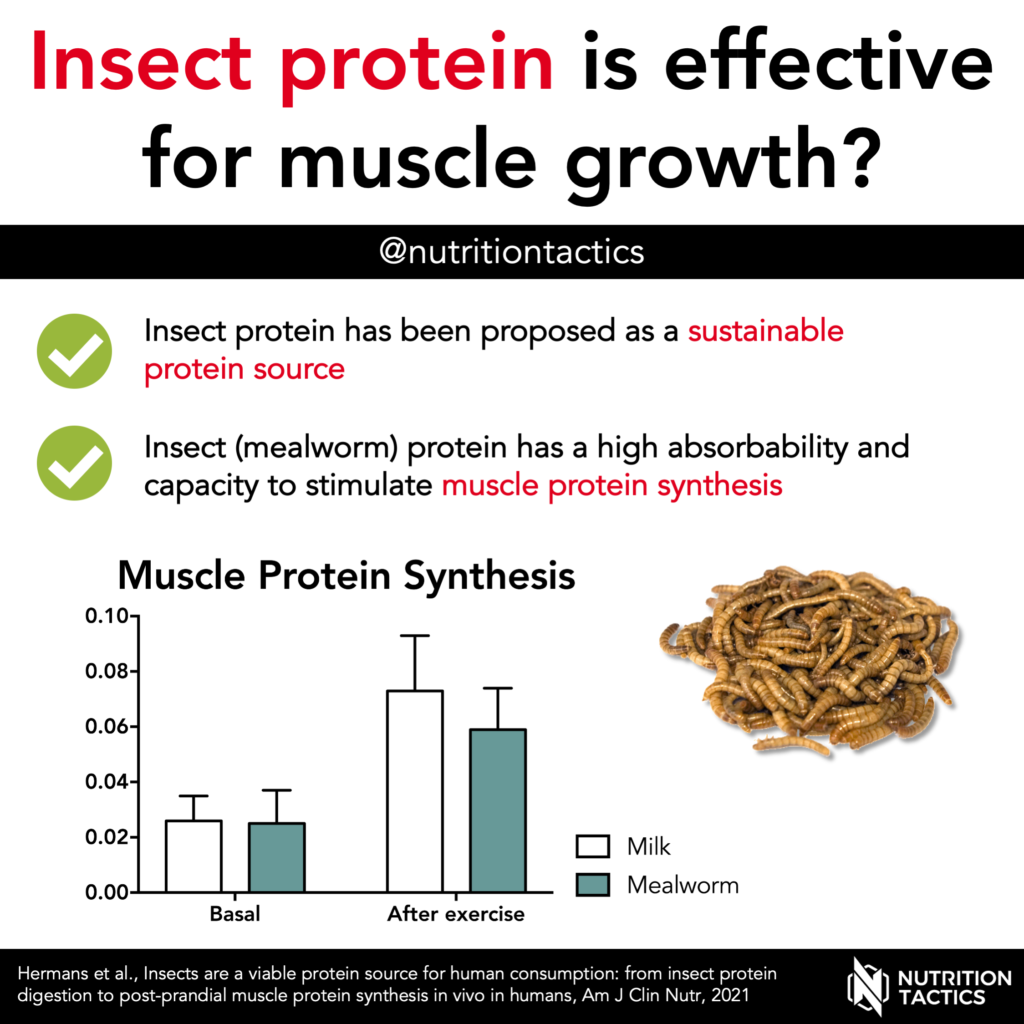Is insect protein effective for stimulating muscle protein synthesis?
Animal-based protein sources are generally very effective in stimulating muscle protein synthesis (the process driving muscle adaptations). This is due to their balanced amino acid profile, high essential amino acid content, and high absorbability.
However, some animal-based protein sources may not be very sustainable. Therefore, insect protein has been proposed as a more sustainable alternative to other animal-based protein sources.
This study investigated the muscle protein synthetic response to either insect (mealworm) or milk protein. Participants performed a bout of resistance exercise followed by the ingestion of 30 g insect or milk protein.
Insect protein was effectively digested and absorbed, with no difference compared milk protein. Insect protein was also effective at stimulating muscle protein synthesis, with no difference compared to milk protein.
Therefore, insects represent a high-quality protein source, that may serve as an alternative to less sustainable animal-based protein such as meat or milk.
In this study insect protein powder was used. The nutritional quality of “whole-food” insects may differ. Insects often have exoskeletons that may lower the absorbability of their protein, thereby lowering the protein quality.
Would you eat insects? Only the powder or also for example fried insects?
Go to the next infographic in the protein series:
Is corn a high-quality protein?


Hi! The chart is showing better protein synthesis with milk protein – is that a mistake? Or is it just not a significant difference?
Do you know the breakdown of amino acids provided by insects vs traditional meats/milk?
Hey Chris,
It indeed appears in the graph that muscle protein synthesis was slightly higher in the milk treatment vs the insect group. However, the difference is quite small and not “statistically significant”. That basically means you can’t conclude that there is a real difference, the small difference might just as well be due to chance. If you repeat the study again, the group might be exactly equal, and if you do it one more time, the insect group might be slightly higher. Based on the data we have so far, the fairest conclusion is: “there does not seem to be much of a difference”. But you would have to test many more people to really get a good difference to see what the average response to milk and protein is and what a potential % difference would be. S
Amino acid composition for the milk and insect protein used in the study are reported in the paper (it’s open-access, so you have access to it).
Keep in mind that this study used a specific insect, and that the AA composition does not necessarily resemble that of all insects.